Carrying forward Shanghai Spirit to strengthen mutual learning among civilizations
Diverse yet concrete initiatives are being implemented. SCO deputy secretary-general Nurlan Yermekbayev noted that the Shanghai Spirit charts the course for different countries and civilizations to get along with each other.
By Yan Huan, Ma Fei, People's Daily
Interactions between civilizations provide the most solid foundation for the development of the Shanghai Cooperation Organization (SCO), and people-to-people exchanges provide the strongest driving force for the organization.
Since the establishment of the SCO, its member states have deepened mutual learning among civilizations, deepened good-neighborliness and friendship, and strengthened people-to-people connectivity, practicing the Shanghai Spirit of mutual trust, mutual benefit, equality, consultation, respect for diversity of civilizations and pursuit of common development, and jointly building an SCO community of cultural exchanges.
The Chinese side has been actively exploring new channels for cultural cooperation to enhance the international communication capacity of the SCO, such as establishing a media cooperation mechanism, hosting the SCO Media Summit, and holding the Media and Think Tank Forum for SCO Countries.
It supports expanding channels for non-governmental exchanges among SCO member states to bring their people, youth in particular, closer to each other. China has launched relevant activities related to the SCO University, hosted SCO Youth Campuses and invited youth leaders of other SCO member states to visit China.
Diverse yet concrete initiatives are being implemented. SCO deputy secretary-general Nurlan Yermekbayev noted that the Shanghai Spirit charts the course for different countries and civilizations to get along with each other.
At the 23rd Meeting of the Council of Heads of State of the SCO, China proposed that in the coming three years, China will provide SCO member states with 1,000 International Chinese Language Teachers Scholarships, offer 3,000 "Chinese Bridge" summer camp opportunities, and invite 100 young scientists to China for scientific research exchanges.
In recent years, the Chinese side has been actively promoting the SCO to launch more down-to-earth projects of people-to-people exchange in various fields, aiming to build a bridge of mutual understanding and friendship among the peoples of SCO member states.
With a people-centered approach, SCO health cooperation has been continuously improved. China has actively promoted resource integration and expanded pragmatic cooperation among institutions. The China-proposed Lifeline Express International Sight Saving Mission and the establishment of a traditional medicine alliance have opened up new prospects for health and medical cooperation within the SCO.
After China announced to carry out 2,000 free cataract operations for SCO member states at the 22nd Meeting of the Council of Heads of State of the SCO in 2022, there has been a surge of patients seeking treatment in Uzbek hospitals, in hope of restoring their vision.
China has provided support for the restoration of historical sites and archaeological cooperation in SCO countries, launching joint archaeological surveys at the ancient city of Rahat in Kazakhstan, a Buddhist temple on the west side of the Krasnaya Rechka site in Kyrgyzstan and Itchan Kala, the walled inner town of the city of Khiva in Uzbekistan.

Following a joint application by China, Kazakhstan and Kyrgyzstan, the Silk Roads: the Routes Network of Chang'an-Tianshan Corridor was inscribed on the UNESCO World Heritage List. It marked the first transnational World Heritage application, building powerful momentums for SCO member states to jointly protect cultural heritage.
Technology is key to solving global issues, while open sci-tech cooperation remains a desired approach. In recent years, SCO member states have increasingly deepened their non-governmental exchanges in science and technology. Through joint R&D, people-to-people exchanges, technology transfers, and various other activities, they have built powerful drivers for sci-tech progress, economic growth, livelihood improvement, and common development.
In Pakistan, the country's first smart distribution centers jointly built by China and Pakistan has increased package sorting efficiency of local e-commerce companies by four times, with the rate of package misclassification dropping from 1 percent to less than 0.03 percent.
The first Luban Workshop, a Chinese-supported vocational training facility, in Central Asia has been launched in Tajikistan. Catering to the country's need for economic development and industrial upgrading, it offers courses on urban heating application and engineering measurement technologies, thus building a talent pipeline for Tajikistan's future development.
The observation area of China's FY-2 meteorological satellites covers SCO countries including Kazakhstan, Kyrgyzstan, Russia, Tajikistan, Uzbekistan, and Pakistan. Through weather forecasting, disaster prevention and mitigation as well as other services, the satellites have effectively enhanced the capabilities of these countries in monitoring weathers, climate and ecological environment.
In the past days, the SCO has always been glittering with a brilliant light of people-to-people exchange. Looking ahead, the organization will keep setting examples of regional and international cooperation on promoting harmonious coexistence among different civilizations and renewing the everlasting friendship of people from all countries, through its efforts to advance people-to-people exchange.
-------------------------------------------------------------------------------------------------------------------------------
Small county in E China develops billion-yuan bakery industry
By Yang Yanfei, People's Daily
A small county inhabited by 100,000 people in east China just created this unbelievable miracle - nurturing over 40,000 bakers in the past 30 years and opening 16,000 bakeries across the country. It boasts a bakery industry whose annual output nears 30 billion yuan ($4.14 billion), and has incubated a series of well-known bakery brands such as Bao's Pastry and Zankee.
As a matter of fact, Zixi county in Fuzhou, Jiangxi Province, is not very "talented" in developing the bakery industry. It is surrounded by the Dajue Mountain, the western foothills of the Wuyi Mountains. About 80 percent of its land is mountainous terrain.
The initial development of the bakery industry in Zixi county relied heavily on the expertise and influence of local skilled individuals.
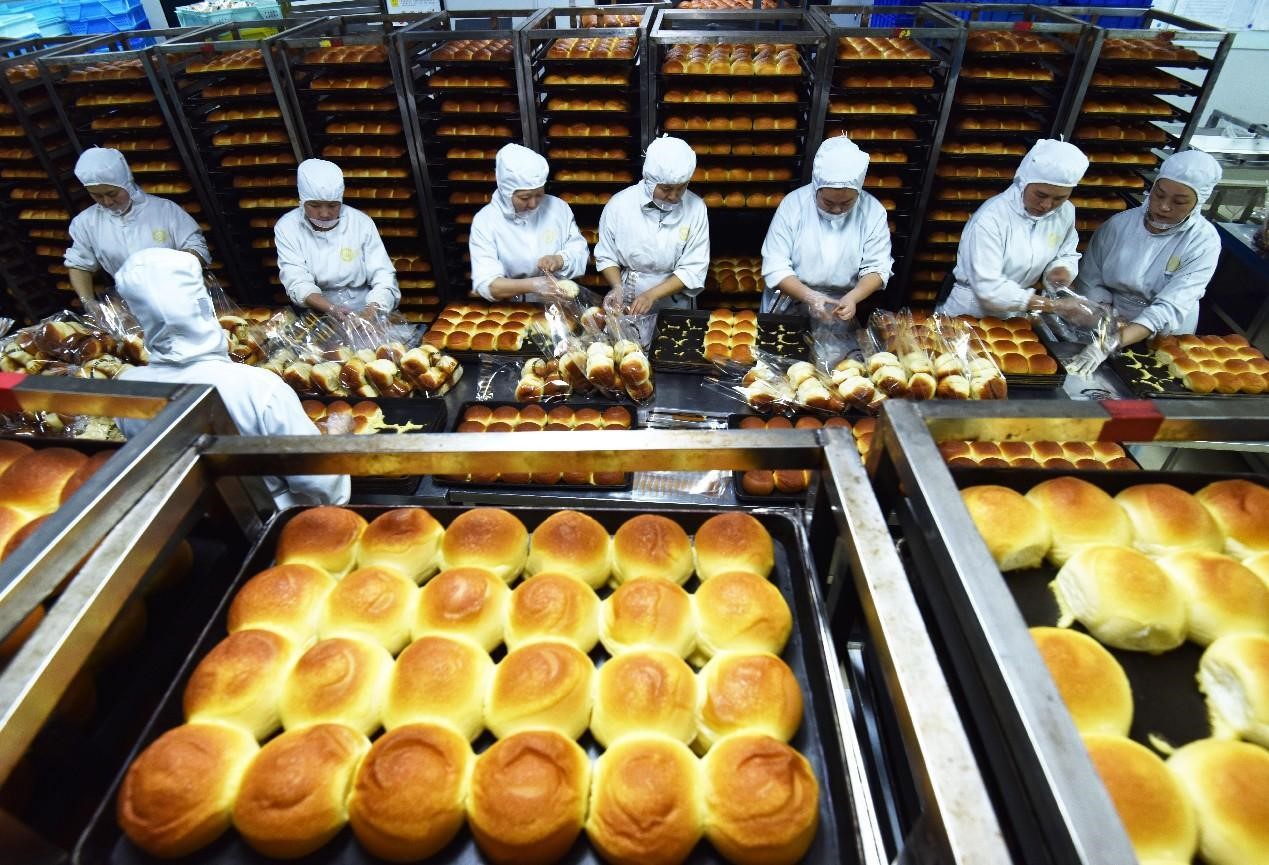
Zhang Xiewang is exactly one of them.
Zhang, who once attended relevant skill training sessions organized by the military unit he served in, retired together with his comrade-in-arms Hong Tao in 1987. The two raised about 10,000 yuan and opened the first bakery in Yingtan, Jiangxi Province.
After weathering the challenges of starting a new business, their venture began to thrive. Therefore, they ventured back to their hometown, carrying their hard-earned capital, to open more bakeries.
With their success, friends and relatives began knocking on their doors, seeking experiences of running a successful bakery business. The duo welcomed them wholeheartedly, imparting their knowledge and skills without reservations.
In the span of a few years, they had mentored and trained over 100 apprentices, with the parents of Bao Caisheng, founder of the now internet-famous Bao's Pastry, among their first batch of students.
Ever since, a strong "bakery force" has been gradually formulated and began venturing into all parts of China.
Initially, bakers from Zixi who ventured out primarily operated family-run bakeries, such as husband-and-wife or sibling partnerships, which were relatively easy to establish. However, they subsequently faced a myriad of challenges, including difficulties in securing funding, acquiring baking skills, and generating profits.
"For the industry to thrive, going solo is not viable," said Xu Quanlong, who had expanded his bakery business to Hangzhou in Zhejiang Province and Kaifeng in Henan Province. At the invitation of relevant departments of Zixi county, he returned home and founded a bakery training center, where he has trained over 10,000 bakers to date.
Zixi county has taken strategic measures to drive the growth of its bakery industry, including inviting successful entrepreneurs who had ventured out to establish training centers in the county, formulating industry standards, and encouraging financial institutions to provide "bakery loans" and other financial products and services to small and micro businesses.
The county has identified the bakery industry as a key driver for developing its local economy. It has even established a dedicated bakery industry development office to systematically implement a series of supportive measures.
"In recent years, branded bakery products have become mainstream in the market. To better embrace this trend, we need to concentrate our efforts," said Zeng Changhua, head of the bakery industry development office.
In recent years, the county has been exploring a cluster-based development approach for its bakery industry. After "Zixi Bread" was approved as a collective brand in 2018, a bakery technology development company was established in the county to advance brand development and operations.
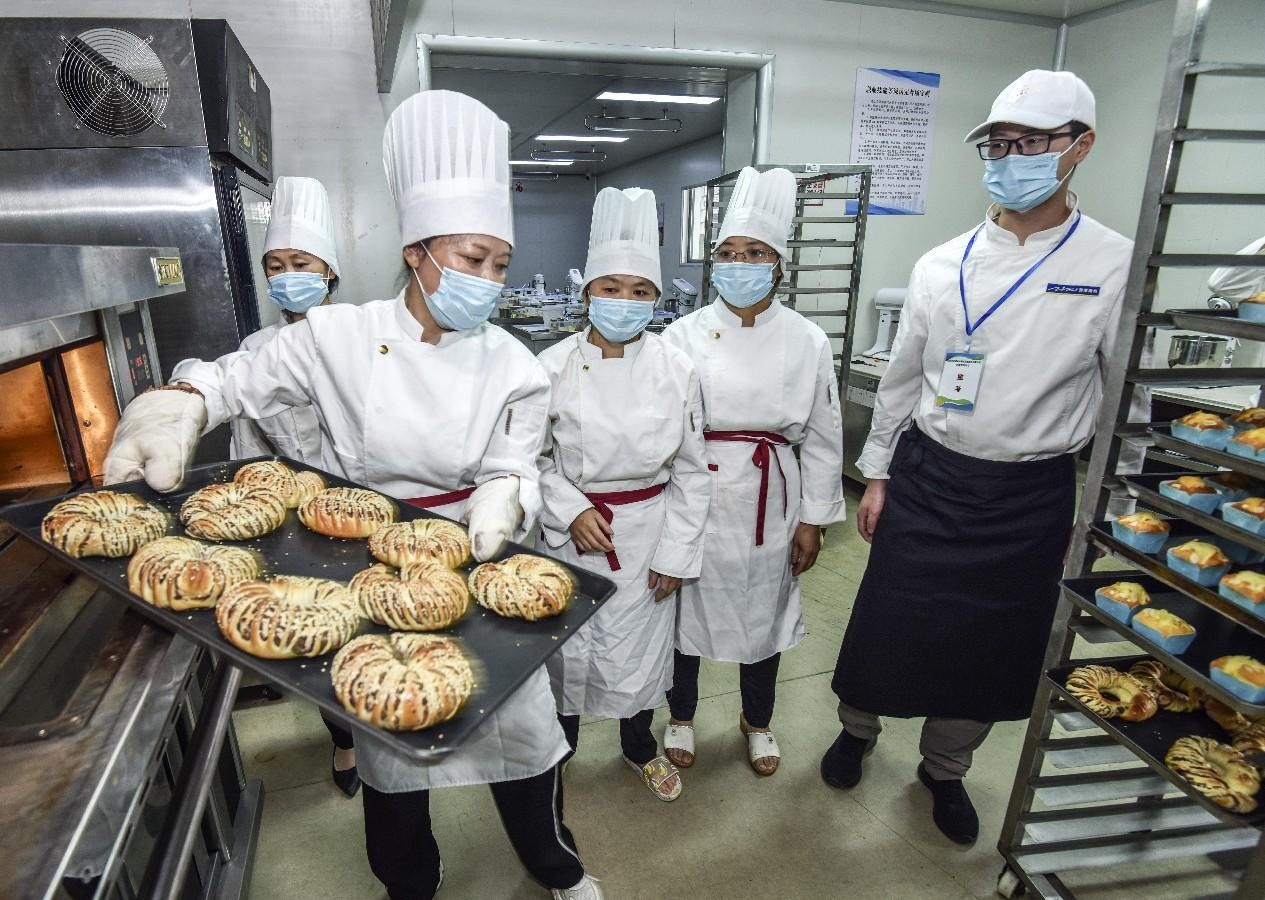
To support brand building, the county holds bakery industry forums, bakery festivals, and other events on a regular basis, promoting new products and facilitating industry exchanges.
Building upon its growing reputation, the county established a bakery industrial park. The park has been joined by a meat floss processing plant with a daily output of 100 tons and a premix flour factory with an annual production capacity of 6,000 tonnes, which are able to serve over 300 bakeries within a 300-kilometer radius. Supporting enterprises producing chocolate, frozen semi-finished goods, and cream have also joined the industrial park.
"The cluster-based development approach enables not only efficient supply but also better cost and quality control," Zeng said. "With the ability to improve product quality, we are confident in the development of our brand."
Inside the spacious and well-lit standardized factory buildings of the bakery industrial park, workers have designated roles - some shape the dough, others handle slicing. Under the warm golden glow of the ovens, the bread takes on an enticing color.
In an office, a large screen divided into 16 sections displays real-time footage from various store locations. Computers store data on ingredients, production, logistics, and sales.
"We have a clear record of the circulation of bread right from the production line," said Qian Haihua, general manager of the bakery technology development company.
By analyzing sales data feedback from different regions, the company can accurately gauge market trends to guide the next day's production plan and provide basis for product design and development.
"The bakery industry sees rapid product renewal. Our company phases out three to five slow-moving products every month," Qian told People's Daily.
Leveraging data support, Zixi's bakery industry is pioneering an integrated system integrating online platforms, retail stores, customer services and modern logistics to improve the supply chain and service capabilities through intelligent upgrades.
"The bakery business in Zixi has grown from nothing to a big industry. It was initially driven by our fellow townsmen, and later expanded through public services and a conducive institutional environment," said Zeng.
"Now, with the bakery industry as a backbone, we aim to explore synergies with organic agricultural production, cultural tourism, and other related industries," Zeng noted.
---------------------------------------------------------------------------------------------------------------------------
AI industry sees prosperous future in China
By Wang Yunshan, People’s Daily
The application of rubber seal strips onto a car roof was accompanied by a captivating display of a huge robotic arm picking it up and rotating it mid-air. This interesting scene was unfolded at a 5G-Advanced (5G-A) flexible production line in a factory of China's carmaker Great Wall Motors (GWM) in Baoding, north China's Hebei province.
Thanks to the integration of 5G-A and artificial intelligence (AI), this efficient production line has slashed 60 hours of downtime per year, thus avoiding potential losses of over 800 million yuan ($110.36 million) that could have been incurred by delayed deliveries.
In recent years, China has made significant strides in AI development, marked by steady growth in industrial scale, robust infrastructure, and a rapid increase of innovative achievements.
"The vast application scenarios, huge market, and massive talent pool have laid a solid foundation for the vigorous development of China's AI industry," said Yu Youcheng, deputy secretary-general of the Chinese Association for Artificial Intelligence (CAAI).
According to Yu, a large number of new breakthroughs, technologies and applications are rapidly emerging across different application scenarios in China.
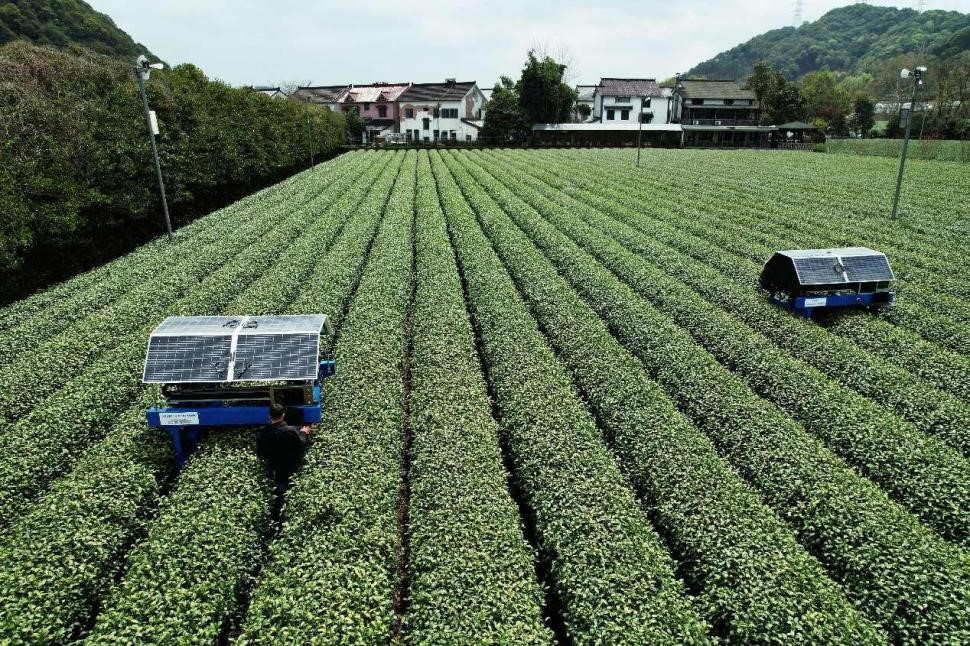
Gradual improvement in infrastructure -- In 2023, the total size of China's data center racks reached 8.1 million and the scale of computing power reached 230 EFLOPS. In particular, the scale of intelligent computing power has reached 70 EFLOPS, an increase of over 70 percent.
Steady growth in industrial scale -- The total scale of China's core AI industry has exceeded 500 billion yuan, and the number of related enterprises has exceeded 4,500. According to a report released by CCID Consulting, a market research firm affiliated with China Center for Information Industry Development (CCID), the market scale of China's AI industry will reach 1.73 trillion yuan by 2035, accounting for 30.6 percent of the world's total.
Continuous expansion of integrated applications -- So far, large-scale AI models developed by China have shown tremendous potential in areas such as smart mining, drug research and development, meteorology, government services, finance, intelligent manufacturing, and railway management. The integrated application of the industrial internet in China has expanded to 49 major categories of the national economy, and generative AI has been widely applied in chatting robots, intelligent search, and text generation.
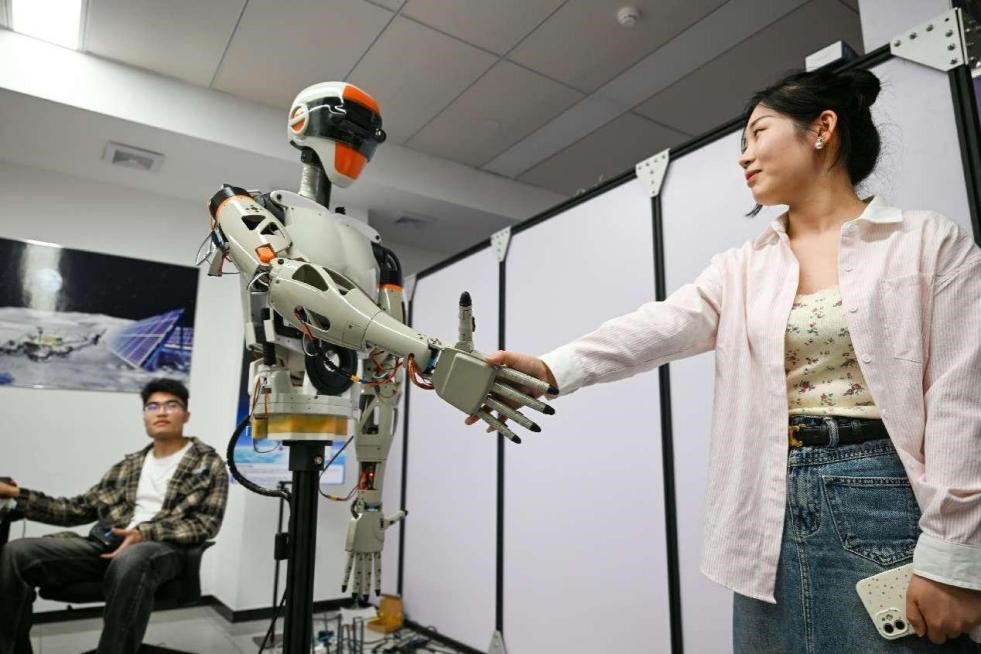
At the general cargo terminal of Rizhao Port in east China's Shandong province, a diverse array of general cargo items came together before making their way to different parts of the world, including steel plates made in Handan, north China's Hebei province, excavators from Zhuzhou, central China's Hunan province, and drainage pipes from Zhengzhou, the capital city of central China's Henan province.
In the past, the complex loading and unloading procedures for these items, which varied greatly in shape and size, resulted in low operational efficiency. Now, with an AI-enabled planning system, the port has boosted its overall operational efficiency by 10 percent and yard throughput by 20 percent.
Apart from assisting intelligent manufacturing, AI technology can also make typhoon forecasts, develop new drugs, identify faults, and formulate production plans. These remarkable breakthroughs are paving the way for an era of intelligence.
The application of AI technology in the transportation sector has enhanced operational efficiency and raised safety levels.
In Changsha, the capital city of Hunan province, buses have been connected to an intelligent traffic control system managed by the traffic police. When a bus approaches an intersection, the traffic signal will automatically switch to green, allowing the bus to have priority passage.
"Smart public transportation saves commuting time by 30.7 percent on average compared to regular transportation modes," said Liu Gao, a project leader of Hunan Xiangjiang Intelligent Science and Technology Innovation Center Co., Ltd. So far, 75 routes in downtown Changsha have gone through intelligent transformation, Liu added.
AI technology has also made scientific research more efficient. Chinese software company Kingsoft has unveiled a one-stop office productivity platform powered by AI, which can analyze data as well as read and recognize Chinese characters, serving as a "well-rounded" digital employee.
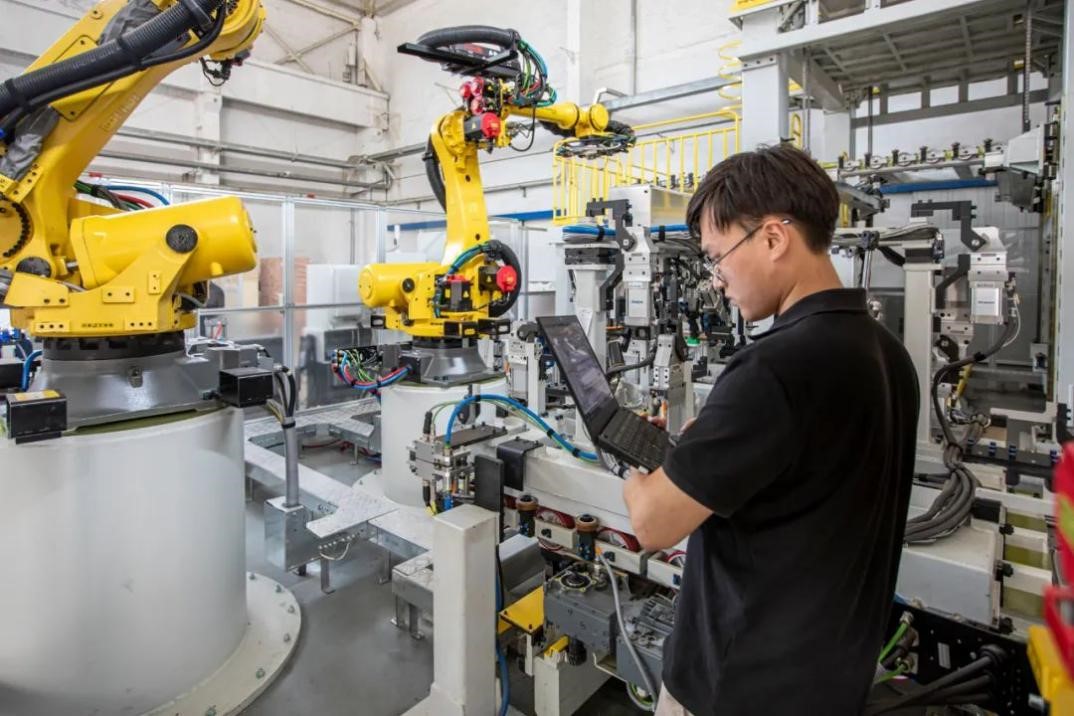
While applied in experiments, AI technologies can significantly save the time needed for scientific research. For instance, Baidu AI Cloud and Shanghai Jiao Tong University have jointly developed an open-source platform for scientific data, which can accelerate the entire chain of chemical synthesis, ranging from molecular design and reaction design to condition generation and reaction testing. This platform can reduce the time required for designing potential functional molecules, such as drug molecules and their synthesis plans, from several months to just dozens of minutes.
In the face of the booming development of the AI industry, many experts and business leaders have highlighted the importance of accelerating AI-related sci-tech innovation and promoting high-quality development and high-level application of AI in order to foster new growth drivers.
Moving forward, China will continue to enhance AI infrastructure, expand AI applications, and advance key and core AI technologies to bring its AI industry onto a higher level.
Sponsor Content / Message from Partner :
This Content is made possible by our Sponsor/Partner; it is not written by and does not necessarily reflect the views of The Kathmandu Post's editorial staff.
See our Advertising Guidelines, or email [email protected] to learn more.




 6.84°C Kathmandu
6.84°C Kathmandu